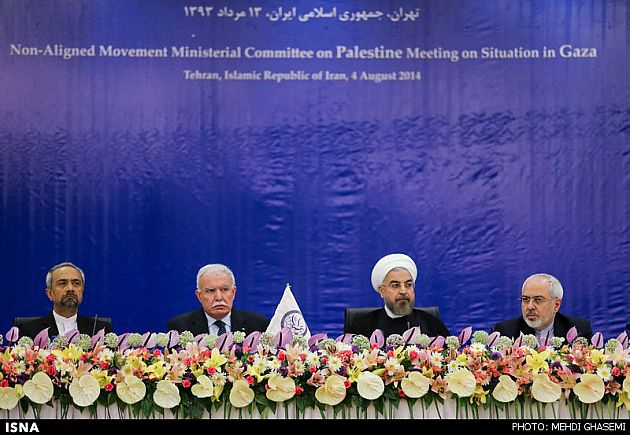NAM Consensus on Palestine

What are the practical capacities and capabilities of the Non-Aligned Movement to resolve the Palestinian issue?
The Non-Aligned Movement is a movement to coordinate the positions of the member countries. Most of its meetings are aimed at making statements, because it is a political institution. This institution has no special executive tool except holding meetings and coordination between its members. In some critical cases, such as the issue of Gaza, due to the volume of crimes, the positions of the countries are close to each other and usually lead to a resolution. Under such conditions, member countries usually cooperate better in the implementation of what has been decided. Most of the efforts are aimed at advancing the defined objectives of this movement. The extent of the implementation of the decisions depends on the significance of the issue for the member states. The more the issue is important for each one of the members, the more that country will make efforts in that regard. For example, following the adoption of the resolution of NAM’s Palestine Committee, the coordination committee of NAM ambassadors in New York will pursue the key points of the resolution and on that ground it will make certain proposals and recommendations. These issues will, then, be pursued by the governments depending on their feeling of responsibility at the national level. These meetings are somehow a reminder of this responsibility. The point which must not be forgotten is that one of NAM’s important tools is the number of its votes. 120 countries are members of this movement and proposing the resolution adopted by NAM in the UN General Assembly means having 120 votes which will ultimately be adopted by the UN General Assembly. Of course, the resolutions of the UN General Assembly are not binding either.
To what extent are the capacities of the member countries used to resolve the differences between the countries of the region and the Persian Gulf littoral states in order to establish more collaboration between them over issues such as Palestine?
There is no tool to resolve the differences between the member countries with regard to challenging issues. The reason is that NAM only states its position with regard to the issues about which there is a consensus. NAM does not get involved in the issues of differences. With regard to very difficult cases, such as the issue of Syria, NAM would hardly take positions because some countries disagree and would not allow a position to be issued. Perhaps it can be said that the only issue upon which there is a consensus is the issue of Palestine. Of course, even with regard to this issue, there are some western countries which create obstacles.
Some countries have separately taken some measures with regard to the issue of Palestine. But no united proposal was presented by the Islamic states especially by NAM. Now, how could NAM propose a united plan with regard to the issue of Gaza?
This measure has been taken. During the last month, five statements were issued in New York which were even signed by Saudi Arabia and Qatar. NAM has a common position with regard to the issue of Palestine. These statements and resolutions clarify our demands and how they should be pursued. Of course, a part of them is related to the Middle East countries as well. Furthermore, what the Palestinians expected from the Arab states with regard to the political, economic and humanitarian aids for Gaza was not fulfilled. Adoption of resolutions would exert pressure on these countries to feel more responsible and act more seriously in this regard. But unfortunately this issue was not, hitherto, comprehended well.
To what extent has NAM attempted to move towards proposing a comprehensive plan with regard to the issue of Palestine?
NAM’s position is clear with regard to the issue of Palestine. NAM supports any proposal which would prevent the continuation of the conflict. These are the capacities of this movement.
Considering the point that NAM is a second UN, to what extent could this capacity be used to exert pressure on the Security Council?
NAM has a group called NAM in the Security Council which is comprised of 5 or 6 countries. These countries are present in the UN Security Council as non-permanent members. Usually one member of this group is from an Arab state and this year it is Jordan. This group reflects the positions of NAM in the Security Council. But the reality is that critical issues are decided in the Security Council by its 5 permanent members and the observing states are not that effective in their decisions. Considering the fact that after a month of the developments in Palestine and the resolution which was proposed by the Arab League and approved by NAM and the Organization of the Islamic Conference, the Security Council has not even negotiated this issue.

